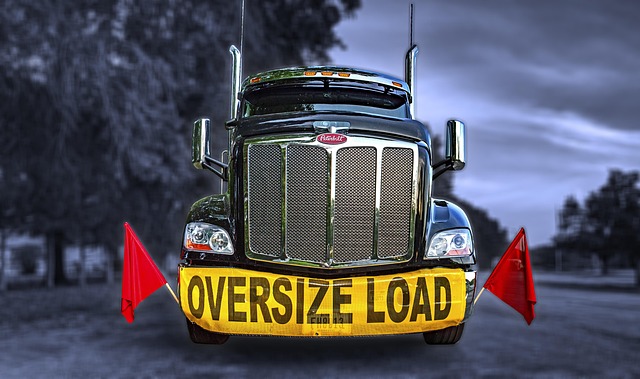Looking to register your car in California? This comprehensive guide breaks down the process step-by-step, from understanding key requirements to paying registration fees. We’ll walk you through gathering essential documents, visiting your local DMV, and even using a DMV VIN verifier to confirm your vehicle’s identity. Get ready to navigate California’s car registration system with ease!
- Understand California Car Registration Requirements
- Gather Necessary Documents for Registration
- Visit Your Local DMV: Step-by-Step Guide
- Verify Vehicle Identity Using VIN (DMV Service)
- Pay Registration Fees and Receive Your Plate
Understand California Car Registration Requirements

Before registering your car in California, it’s crucial to understand the state’s specific requirements. The California Department of Motor Vehicles (DMV) mandates that all vehicles operated on public roads be properly registered and have a current vehicle inspection, often referred to as a vin inspection. This process involves verifying key information linked to your vehicle’s unique Vehicle Identification Number (VIN), including its history and authenticity, using tools like a dmv vin verifier.
Additionally, for convenience, many Californians opt for mobile vin verification services, which allow for on-site inspections. This method streamlines the registration process by eliminating the need to visit a DMV office. Whether you choose traditional or mobile services, ensuring your vehicle passes the vin inspection is a critical step in the registration procedure.
Gather Necessary Documents for Registration

Before heading to the California DMV (Department of Motor Vehicles) or even filling out any paperwork, it’s crucial to gather all the essential documents required for car registration. This process is streamlined with the use of a DMV VIN verifier and mobile vin verification tools that ensure your vehicle’s information is accurate and up-to-date. Start by collecting your vehicle’s registration certificate or proof of purchase, which includes the Vehicle Identification Number (VIN). This unique identifier can be found on the vehicle’s title document, engine block, or door frame. Additionally, you’ll need a valid driver’s license, proof of insurance, and current emissions test results if applicable.
For a vin inspection, make sure all ownership documents are in order, as these will be verified by the DMV. If you’ve recently purchased a used car, ensure the seller has completed the necessary transfer of ownership documents. This process is not just about convenience; it’s essential for ensuring your registration goes smoothly and that your vehicle’s history is accurately recorded, especially when utilizing mobile vin verifier applications.
Visit Your Local DMV: Step-by-Step Guide

To begin the process of registering your car in California, start by visiting your local Department of Motor Vehicles (DMV) office. Here’s a step-by-step guide to help you through the process. First, locate your nearest DMV field office and check their operating hours. Then, gather all necessary documents such as your driver’s license, proof of insurance, and vehicle registration from your previous state (if applicable).
Upon arrival, proceed to the customer service counter and inform the DMV agent that you’re here for vehicle registration. They will guide you through the process, which typically involves filling out an application form and providing proof of ownership, like a Vehicle Identification Number (VIN) verifier or certificate of sale. For added convenience and accuracy, consider using a mobile VIN verification service to obtain your vehicle’s unique VIN prior to visiting the DMV. This ensures a smoother experience by having all your information ready.
Verify Vehicle Identity Using VIN (DMV Service)

Before you can register your car in California, it’s crucial to ensure the vehicle’s identity is verified accurately. One effective way to do this is by using the DMV’s Vehicle Identification Number (VIN) verifier service. This service allows you to confirm that the VIN on your car matches the one listed in the state’s records, ensuring the vehicle’s authenticity. Simply visit the California DMV website or app and look for the VIN verification option. You’ll need to provide details like the VIN itself, along with other necessary information, for a swift and secure process.
For added convenience, many mobile vin verifiers are available that allow you to complete this step from the comfort of your home or on the go. These tools streamline the vin inspection process by providing real-time results, making it easier than ever to register your vehicle with the California DMV.
Pay Registration Fees and Receive Your Plate

After completing your vehicle’s registration application at the DMV, it’s time to pay the registration fees. These fees vary based on the type of vehicle and its age. You can typically pay online, by phone, or in person. Once your payment is processed, you’ll receive your vehicle’s license plate. The California Department of Motor Vehicles (DMV) offers both stationary and mobile vin inspection services to ensure the authenticity of your vehicle’s identification number (VIN).
A mobile vin verification service can be particularly convenient if you prefer not to visit a DMV office. This process involves a trained professional coming to your location to conduct an on-site vin inspection, ensuring that your car matches the details registered with the state. This step is crucial to avoid fraud and ensure your vehicle’s registration stays accurate and up-to-date.
Registering a car in California is a straightforward process once you understand the requirements and have all necessary documents. By following our step-by-step guide, visiting your local DMV, verifying vehicle identity using a VIN (with the help of a dmv vin verifier), and paying the registration fees, you’ll be on your way to legal driving in no time. Remember, proper car registration is not only essential for safety but also for avoiding penalties and ensuring your vehicle’s integrity.
